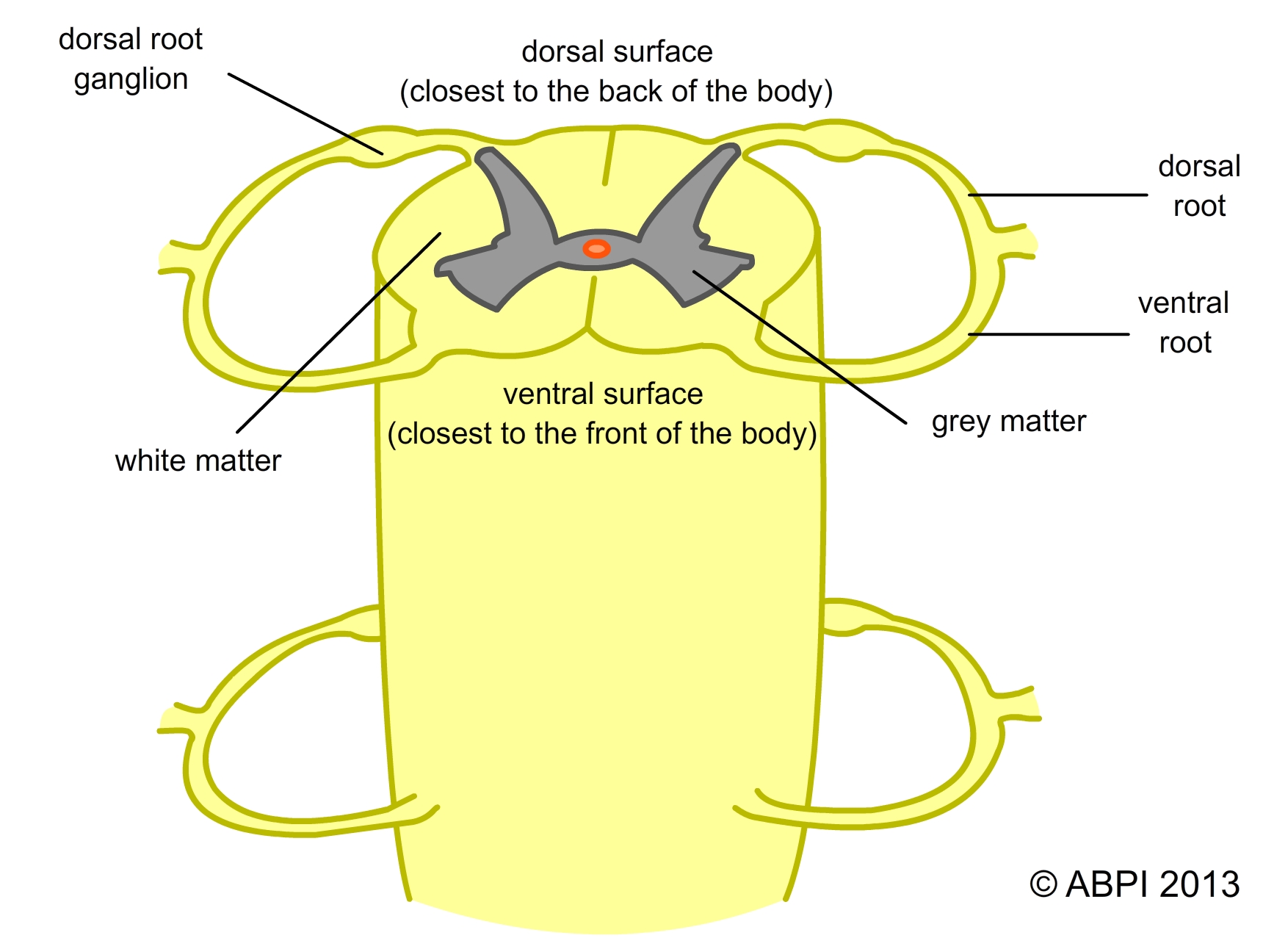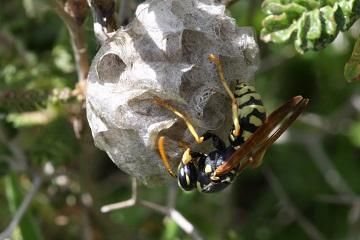This topic takes on average 55 minutes to read.
There are a number of interactive features in this resource:
 Biology
Biology
The brain is the place where complex coordination and integration of nervous responses takes place. The spinal cord is also part of the central nervous system. It has two major roles:
The structure of the spinal cord is much simpler than the structure of the brain. This reflects its simpler functions. It has grey matter (cell bodies and very short relay neurones) in the centre and white matter (axons) on the outside. All the way down the spinal cord there are entry points at regular intervals for the sensory nerves bring information into the CNS and motor nerves carrying instructions out from the CNS to the effector organs.

Many of the things you do are controlled by your voluntary nervous system. You see a cake or pastry, you decide you want it and you pick it up and eat it. However some of the actions of our bodies take place without any awareness on our part.
Many of the basic everyday functions of your body – breathing, the beating of the heart, digestion – work all the time without any conscious thought. These involuntary actions are controlled by reflexes that leave the brain free for more complex coordination.
Sometimes, especially in situations where you are at risk, you react so quickly that there is no time for conscious thought. If you touch something hot, or tread on a sharp stone or drawing pin, you pull away before you consciously feel the pain. These unconscious, fast responses help us to avoid danger or damage and they are also controlled by reflexes.
The key point about a reflex action is that the impulses do not reach a conscious area of the brain before instructions are sent out through motor neurones to cause an action. Many reflexes involve the spinal cord – these are the spinal reflexes. Some reflexes (for example the pupil reflex of the eye) involve unconscious areas of the brain – these are the cranial reflexes. Reflexes involve a sensory neurone, a relay neurone in either the spinal cord or the unconscious areas of the brain and a motor neurone. They can be summarised like this:
stimulus → receptor → coordinator (relay neurone) → effector → response
Signals are also sent to the conscious areas of the brain so you know what has happened but those impulses arrive after the reflex has occurred.
Nervous responses are important throughout the animal world. Much of the behaviour of invertebrate animals is made up of a series of unconscious reflex responses to particular triggers. This can lead to behaviour which appears very complex and even clever. Insects such as honey bees perform complex dances to communicate where food can be found, leaf cutter ants ‘farm’ fungi to provide themselves with food and some wasps build complex paper nests in which to lay their eggs and rear their young. Yet almost all of this behaviour is the result of a series of reflex responses to the world around them.
Conscious thought as well as reflexes control the behaviour of animals such as mammals. However reflexes still play an important part in the way animals – including humans - respond to the world around them.
Reflexes are so important that doctors use them to test if our bodies are working and responding as they should. New born babies have more reflexes that older children – for example the Moro or startle reflex and the gripping reflex. However reflexes are important even in adults. A doctor will check the pupil reflexes (dim light – pupils large, bright light, pupils small) to see if a patient is responding normally to light after a head injury. They will also check the knee jerk reflex (important in helping you maintain your posture) both to check that nerve impulses are travelling between the leg and the spinal cord normally and also to look out for disease in the cerebellum. (Click here for more information on the structure of the brain)
